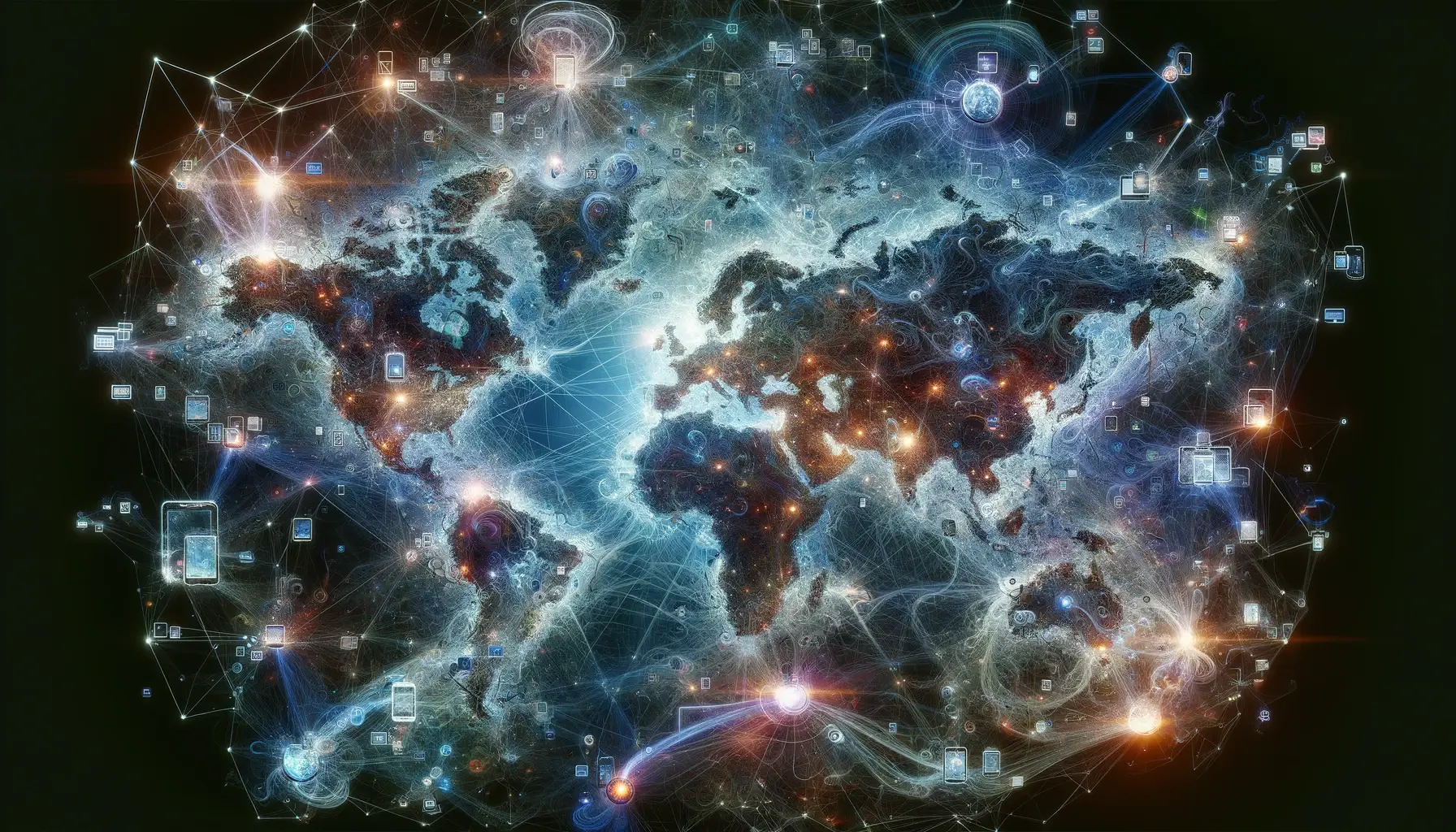In an era marked by the rapid dissemination of information, the term "disinformation" has surged to the forefront of societal concerns, signifying a deliberate attempt to mislead and manipulate public perception. Unlike inadvertent misinformation, disinformation involves the intentional creation and propagation of false narratives with the potential to deceive individuals and influence the digital information landscape. This malpractice exploits cognitive biases and leverages technologies to craft and amplify deceptive content, undermining the very fabric of truth-seeking behaviors. As we venture deeper into the digital age, distinguishing fact from fiction online has become a battleground for maintaining the integrity of our shared reality.
The Impact of Disinformation on Society
The impact of disinformation on society extends far beyond the confines of cyberspace; it permeates the psychological warfare of information, fostering social division and eroding the trust in journalism integrity. The ripple effects of viral fake news can trigger political polarization, public health crises, and even affect the outcomes of pivotal elections. With each fabricated story, the social engineering defense of our cognitive security erodes, making it imperative to address not just the spread but the very essence of disinformation. Recognizing the gravity of this digital deceit highlights the importance of proactive measures to safeguard informational integrity and celebrate truth in the digital realm.

The Birth of Disinformation in the Digital Realm
Historical Context of Disinformation
Long before the advent of digital media, disinformation served as a tool of manipulation and control; methods of historical propaganda are littered throughout the annals of time. From the psychological warfare tactics used by empires to the Cold War's ideological battles, the narratives unveiled were designed to shape public opinion and policy. However, unlike the controlled information dissemination of the past, today's digital age has democratized the ability to broadcast, morphing the shape and reach of these deceptive practices. Understanding the roots of disinformation allows us to recognize its evolution and prepare for its contemporary iterations.

The Transition to Digital Platforms
As the world embraced the internet, the transition to digital platforms provided fertile ground for the viral fake news phenomenon to thrive. The digital realm's interconnectedness meant information could travel faster than ever before, with little to no checks on its authenticity or source. Traditional gatekeepers of facts were circumvented, and the tech giants' rise brought with it a new wave of challenges. The social network misinformation that emerges nowadays is a sophisticated descendant of its historical predecessors, leveraging algorithmic transparency, or rather the lack of it, to gain unprecedented influence and reach.
Virality and Its Consequences
The virality intrinsic to social media platforms exponentially amplifies the spread of disinformation. With social media algorithms designed to engage users by reinforcing existing beliefs, the echo chamber effect is magnified, feeding into cognitive biases and leading individuals into filter bubbles where contrasting views are scarce. This kind of automated echo chambers has profound repercussions—misleading information travels at breakneck speed, outpacing the truth and enabling disinformation campaigns to reach global audiences with ease. The consequences of this unchecked virality are pervasive, affecting everything from public health to the very core of democratic processes, necessitating urgent and determined responses from all facets of society.
How Disinformation Spreads
The Role of Social Media Algorithms
Social media algorithms play a pivotal role in the dissemination of disinformation. These complex formulas, often shrouded in the darkness of corporate secrecy, are tuned to maximize user engagement by prioritizing content that provokes emotional responses. By exploiting psychological triggers, such algorithms inadvertently favor sensational and often misleading information. The content that aligns with the users' preconceptions tends to see higher engagement rates, resulting in a virtual feedback loop that bolsters the visibility of disinformation. Thus, the very design of these platforms can foster the spread of digital deceit, underscoring the need for algorithmic transparency in the battle against the falsehoods plaguing our information ecosystem.
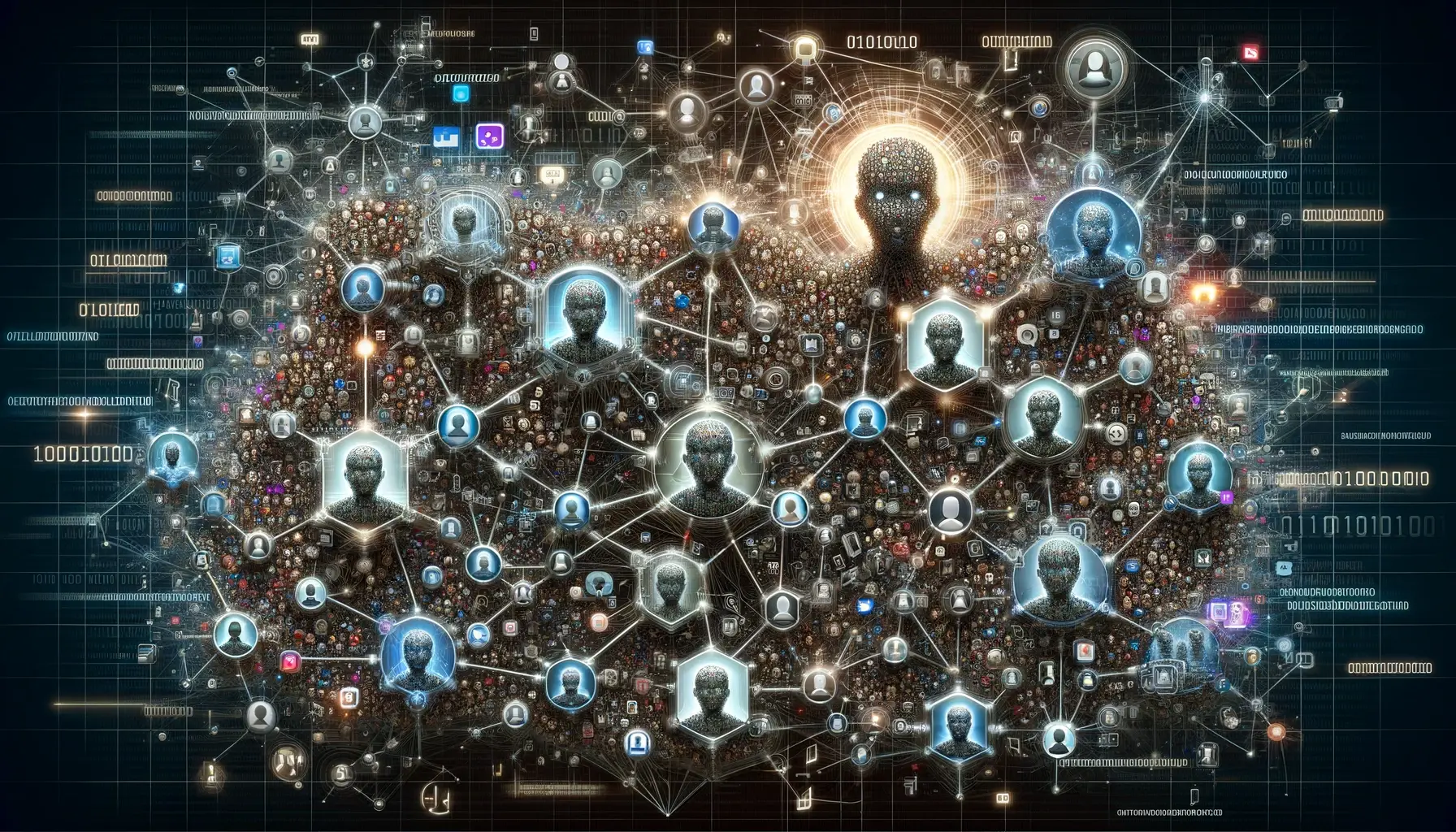
Echo Chambers and Filter Bubbles
Echo chambers and filter bubbles serve as digital fortresses for disinformation, perpetuating the circulation of false narratives within isolated online communities. Created through a confluence of algorithmic sorting and human inclination towards confirmatory information, these echo chambers intensify beliefs by reflecting a user's preexisting viewpoints back at them. Filter bubbles take this phenomenon further by utilizing personalization algorithms that tailor a user's online experience to their interests, effectively shielding them from divergent perspectives. This insular environment makes it challenging for truth to penetrate, reinforcing disinformation and contributing to the knowledge fragmentation of the populace.
Bots, Trolls, and Fake Accounts
Bots, trolls, and fake accounts are nefarious agents within the disinformation infrastructure, often deployed to mimic human activity and manipulate discourse. Bots are automated programs that can rapidly disseminate false narratives across platforms, artificially inflating the perceived popularity or relevance of disinformation. Trolls engage in disrupting conversations, spreading chaos, and undermining constructive discourse. Fake accounts, which masquerade as genuine users, lend credibility to false information, influencing real users and skewing the social network's misinformation detection efforts. These actors blur the lines between reality and fabrication, complicating efforts to maintain a genuine and trustworthy digital dialogue.
The Influence of State-Sponsored Propaganda
State-sponsored propaganda represents a particularly dangerous strain of disinformation. With the resources and strategic motivations of nation-states behind them, these large-scale operations aim to control public perception and international narratives to suit political objectives. Using a mixture of cyber manipulation tactics, disinformation research, and influence operations, state actors can destabilize adversarial nations, sway international policy, and shore up domestic support. The insidious nature of these campaigns makes them difficult to identify and counteract, as they often come cloaked in layers of plausible deniability and geopolitical maneuvering, presenting a significant challenge to global information integrity and requiring concerted international efforts to neutralize.
Key Players in the Disinformation Ecosystem
Government and Political Actors
Government and political actors often feature prominently in the disinformation ecosystem, wielding the ability to craft narratives that serve their agendas. Whether through overt channels or covert operations, the information warfare waged by these entities can have profound implications for domestic and global politics. Driven by the desire to influence elections, regulate political discourse, or undermine their adversaries, these actors utilize state-sponsored propaganda blended with strategic disinformation research. This deliberate circulation of misinformation seeks to manipulate public sentiment, posing a direct challenge to the democratic processes and necessitating the development of counter-propaganda strategies that can withstand the sophistication of governmental tactics.
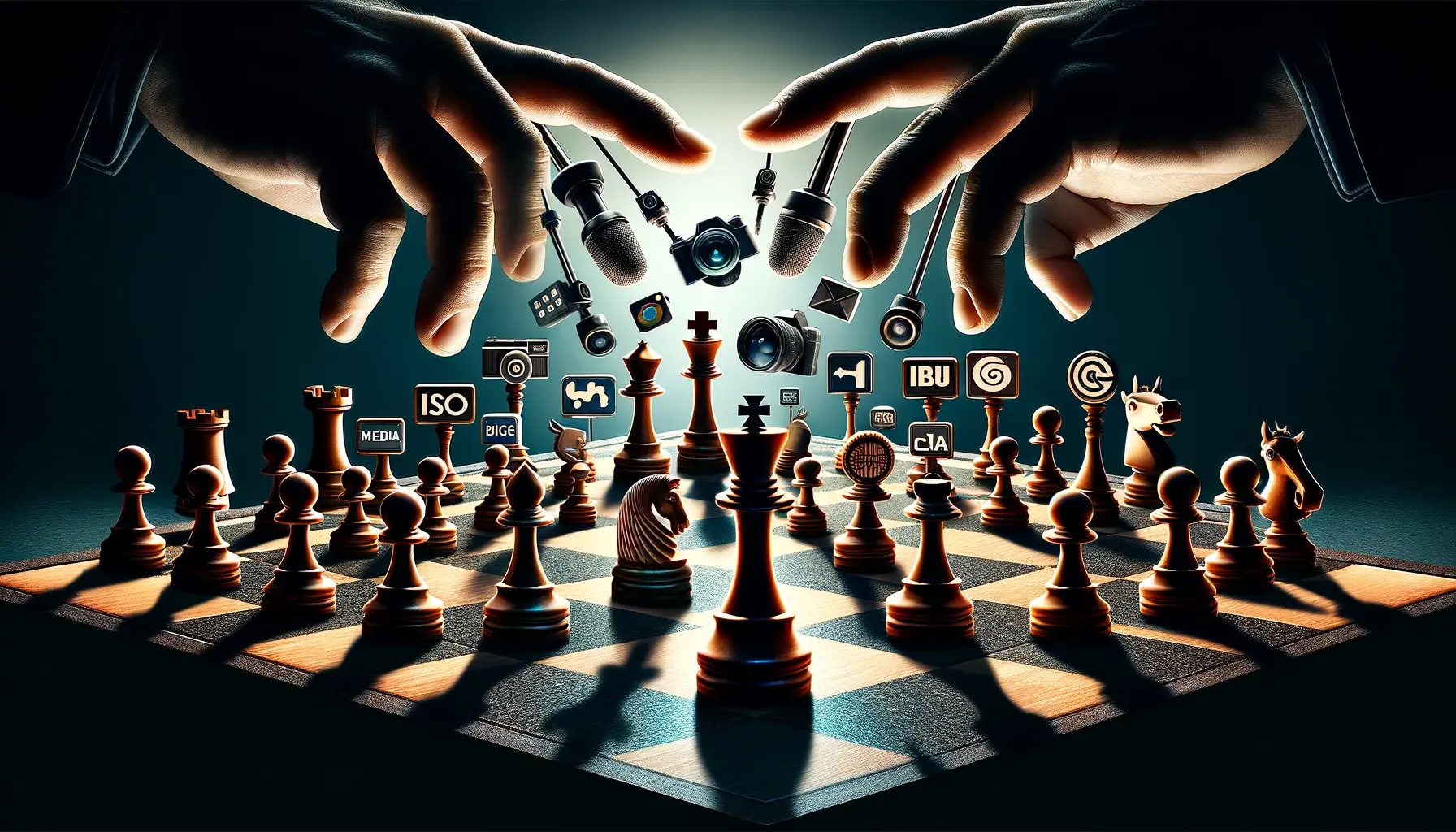
Media Outlets and Journalism
Media outlets and journalism, traditionally the purveyors of truth and integrity in the digital communication landscape, now find themselves at a crossroads. The race for clicks and viewership in the competitive media environment can lead some to sacrifice accuracy for sensationalism, inadvertently contributing to the misinformation consequences that mar the public discourse. However, committed journalists and reputable media organizations are also the frontline warriors in the battle for factual reporting. By adhering to strict fact-checking processes and cultivating critical media analysis skills among their audiences, these institutions can affirm their role as bulwarks against the tide of disinformation threatening the foundation of an informed democracy.
Technology Giants and Social Media Platforms
Technology giants and social media platforms are central figures in the modern disinformation narrative by virtue of their vast influence over the digital information landscape. The design of their systems, which often lack sufficient transparency in content curation, can inadvertently reinforce the echo chamber effect, bolstering the spread of digital deceit. These platforms, equipped with powerful tools and data, bear a significant responsibility to mitigate the scourge of disinformation. Efforts such as improving algorithmic accountability, promoting digital literacy skills, and implementing robust content moderation policies are critical to diminishing the influence of misinformation. As holders of the digital keys to public discourse, these entities must navigate the delicate balance between protecting free speech and ensuring information disorder does not unravel the social fabric.
The Effects of Disinformation
Political Polarization and Elections
The weaponization of disinformation has a direct and corrosive impact on political systems, exacerbating polarization and undermining the sanctity of elections. By exploiting and amplifying societal divisions, malevolent actors can manipulate electoral outcomes and skew the democratic balance. The prevalence of digital deceit in political contexts serves not just to galvanize fringe groups but also to distort the perceptions of the moderate majority. This polarization is further fueled by echo chambers within social media platforms, where users are systematically shielded from counter-narratives, creating a breeding ground for political extremism and sowing distrust in electoral integrity and democratic institutions.
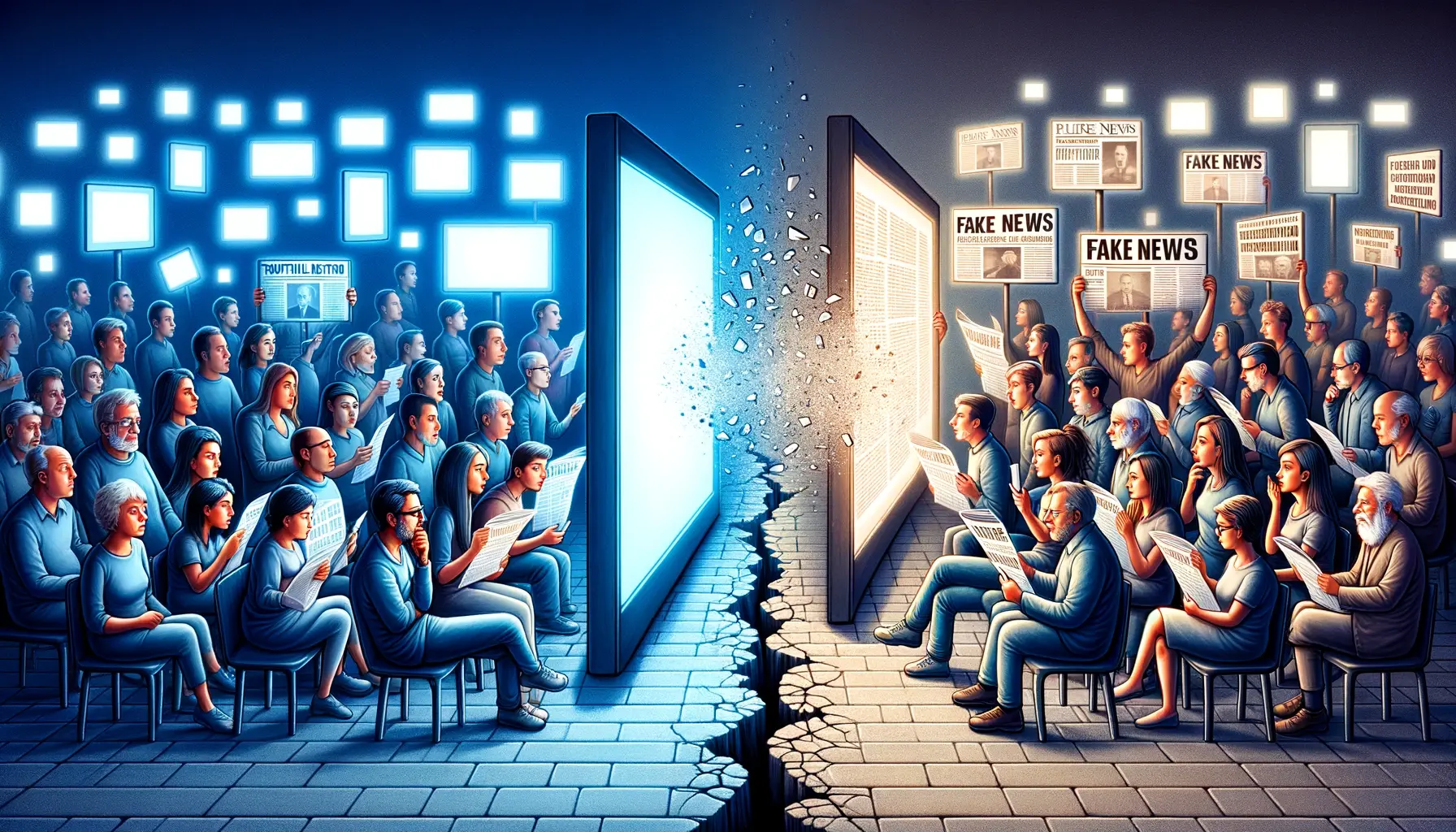
Public Health Crises and Misinformation
Public health represents another battlefield for the misinformation consequences we witness in today's digital age. False narratives around medical outbreaks, vaccine safety, and health policies proliferate with alarming speed, often outpacing factual information dissemination from credible health agencies. The stakes are high, as misinformation can lead to harmful behaviors, vaccine hesitancy, and a widespread reluctance to accept scientific expertise. Tackling this public health misinformation requires a concerted effort to strengthen information verification among the public and promote truth-seeking behaviors, ensuring that individuals have access to reliable and life-saving health information.
Social Unrest and Division
Social unrest and division can be inflamed by the deliberate dissemination of disinformation, which often exploits existing societal tensions. Disinformation campaigns, tailor-made to exacerbate conflicts, stir up social engineering defenses that hamper constructive dialogue and collaborative problem-solving. As false information spreads unchecked, it has the capacity to spark demonstrations, fuel xenophobia, and aggravate racial and class-related tensions. Such dynamics underscore the vital importance of maintaining cognitive security within communities, fostering spaces for information authenticity, and building resilience against attempts to undermine social cohesion through the strategic spread of disinformation.
Exposing the Tactics: A Closer Look at Disinformation Campaigns
Case Study: Election Interference
A profound example of the tactics employed in disinformation campaigns is the interference in election processes. Seemingly authentic digital channels are commandeered to circulate strategic narratives designed to sway voter opinions or erode confidence in the election system. These operations often employ a mixture of genuine content interwoven with misinformation to craft plausible and influential messages. Sophisticated campaigns make use of targeted social engineering techniques, utilizing personal data to tailor disinformation to susceptible demographics. The ripple effect of such interference threatens the core of democratic governance, rendering transparency and international collaboration essential in defending against these pernicious influence operations.
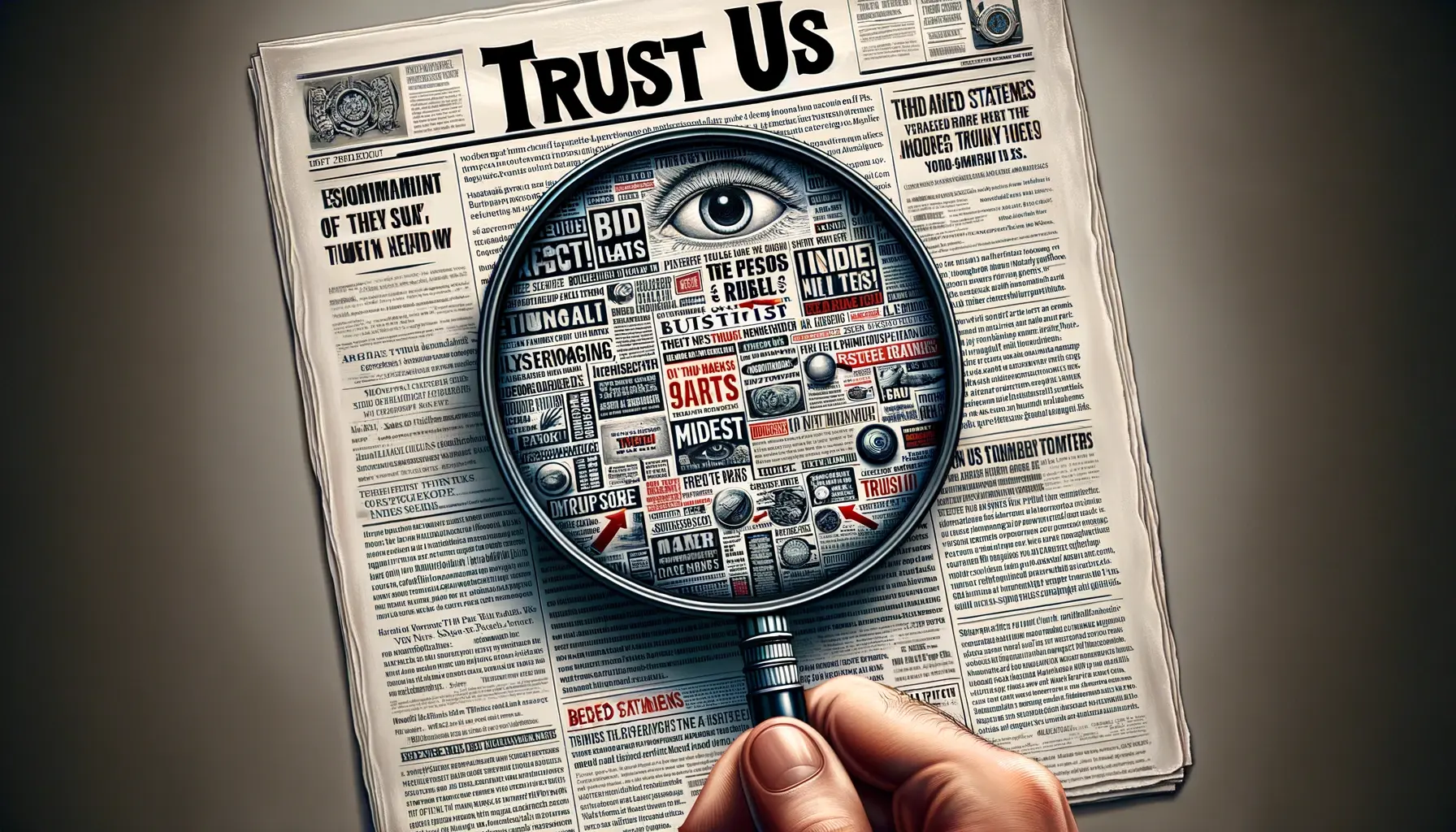
Analysis: Public Health Communication
The realm of public health communication has become a battleground for information authenticity, particularly in light of divisive campaigns around medical interventions. The rapid spread of fear-driven narratives across digital platforms poses a significant challenge to public health efforts. These campaigns can undercut scientific consensus and lead to widespread skepticism, impacting public actions and policy. Addressing the complex relationship between public health communication and disinformation requires an approach that respects personal liberties while reinforcing the role of evidence-based science in guiding health-related decisions.
Dissecting a Disinformation Narrative
To effectively counteract disinformation, one must understand the anatomy of a false narrative. Typically, these narratives contain kernels of truth, strategically sandwiched between fabrications to bolster their believability. They leverage cognitive biases, appealing to emotions and identities to achieve rapid and organic dissemination. A disinformation narrative is often tailored to exploit societal fractures, wrapped in relatable language, and formatted to mimic credible news sources. Dissecting such narratives requires critical thinking, digital literacy skills, and an acknowledgment of one's susceptibility to misinformation, fostering a discerning public capable of challenging and demystifying deceitful information.
The Use of Deepfakes and Synthetic Media
As technology advances, disinformation campaigns increasingly turn to tools like deepfakes and synthetic media to create highly convincing false content. Deepfake technology utilizes artificial intelligence to manipulate audio and video, rendering the distinction between genuine and fabricated material difficult for the untrained eye. When used maliciously, deepfakes have the potential to discredit public figures, manipulate evidence, and instigate chaos. The threat posed by these technological feats to informational integrity is profound, necessitating advancements in detection and verification technologies, as well as legal and societal safeguards calibrated to guard against the misuse of these potent tools.
Counteracting Disinformation: Successful Examples
Despite the challenges posed by disinformation, there have been successful efforts to counter its spread. These initiatives often involve multi-pronged approaches combining technology, education, and policy. For instance, collaborative efforts between fact-checking organizations, media literacy education providers, and social media platforms have shown efficacy in identifying and mitigating the spread of false narratives. Some nations have implemented rapid response teams to address misinformation in real-time, while technologists are developing AI-powered tools to detect and flag synthetic media. By studying these successes, stakeholders across society can develop a more comprehensive and resilient strategy to preserve the integrity of our informational ecosystems.
The Quest for Truth: Fact-Checking and Verification Methods
The Process and Importance of Fact-Checking
Fact-checking stands as the cornerstone in the quest for truth, serving as a critical defense mechanism against the infiltration of falsehoods into public discourse. This meticulous process involves verifying claims against established evidence, consulting credible sources, and cross-referencing information to distinguish fact from fiction. Fact-checking organizations play an instrumental role in this landscape, challenging the veracity of narratives and holding content creators accountable for the information they disseminate. The importance of this practice cannot be overstated; it upholds informational integrity, empowers readers to make informed decisions, and combats the cognitive biases that disinformation campaigns so effectively exploit.

The Rise of Fact-Checking Organizations
In response to the proliferation of disinformation, fact-checking organizations have risen to prominence, forming an integral part of the information verification ecosystem. These entities work tirelessly to debunk myths, clarify misinformation, and provide clarity in an increasingly murky informational environment. Through a rigorous methodology that prioritizes impartiality and transparency, fact-checkers dissect claims, rate their accuracy, and publish their findings for public scrutiny. Their emergent role not only detangles the narratives spun by those peddling falsehoods but also reinforces the importance of critical media analysis and the pursuit of truth.
Digital Forensics and Combating Falsehoods
Digital forensics is an evolving field that applies scientific methods to the verification process, tracing the origins and authenticity of digital content. As deepfakes and synthetic media become more prevalent, these techniques become indispensable in distinguishing manipulated materials from legitimate ones. By analyzing metadata, reverse-searching images, and employing advanced algorithms that can detect anomalies in digital files, forensic experts provide a bulwark against the technological manipulation of reality. This expertise is vital in exposing disinformation campaigns, safeguarding the digital information landscape, and ensuring the veracity of content consumed by the public.
The Responsibility of Individuals and Educators
Developing Critical Thinking Skills
The empowerment against disinformation begins with developing and honing critical thinking skills among individuals. An analytical mindset provides a necessary shield in discerning false narratives, examining arguments with a healthy dose of skepticism, and evaluating sources for credibility. This defense against cognitive biases diminishes the manipulative power of disinformation, fostering a more questioning and informed citizenry. As individuals cultivate the habit of questioning information, they contribute to a societal norm where truth is valued, and falsehoods struggle to take root. Cultivating these skills is an ongoing process, one that is essential in maintaining cognitive security in the face of an ever-evolving digital onslaught.
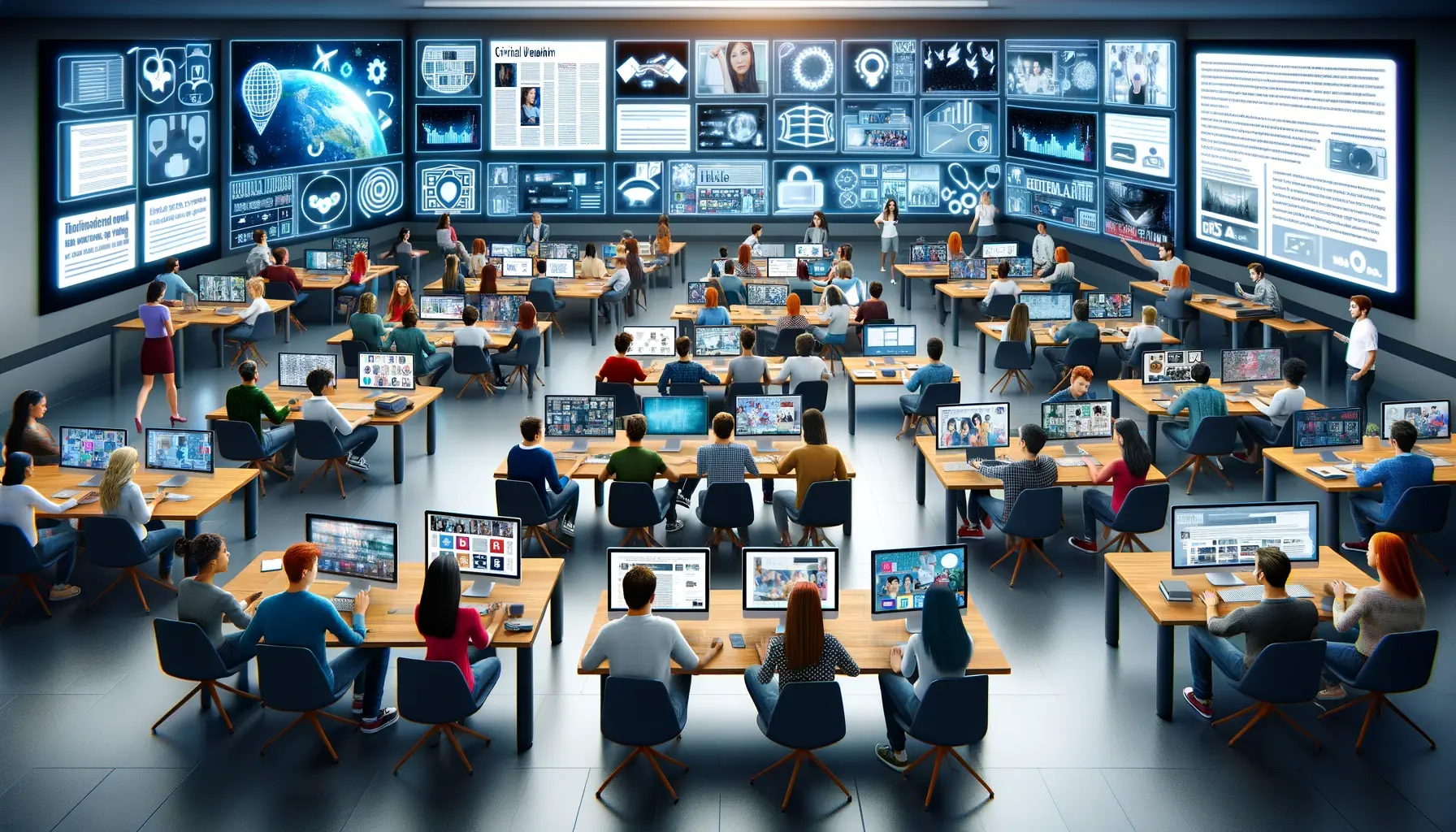
Media Literacy Education
Equally crucial to combating digital deceit is the role of media literacy education, which should not only be integrated into formal schooling but also into community and adult learning programs. Media literacy equips individuals with the tools to navigate the complex media environment, from understanding the role of algorithms in shaping their online experience to recognizing the tactics used in disinformation campaigns. Education in this area extends beyond simply identifying misinformation; it involves fostering an appreciation of journalistic integrity and the significance of a robust information ecosystem. By embedding media literacy in our education system, we can prepare future generations to protect and perpetuate truth in the digital realm.
Encouraging Skepticism and Verification
Central to the responsibility of both individuals and educators is the promotion of skepticism and the practice of verification. Encouraging a culture of 'trust but verify' instills a constructive form of doubt, where open-minded inquiry goes hand in hand with a vigilant stance against accepting information at face value. This approach goes beyond passive consumption to engage individuals in the active assessment of news and content encountered online. By providing access to verification tools and fostering an environment that values fact-checking, we nurture a populace that is resistant to manipulation and committed to the integrity of factual discourse. This shift in societal norms toward skepticism and verification is a powerful countermeasure to the influence of disinformation in our digital age.
The Role of Policy and Regulation
Government Interventions and Legislation
The complex dance between protecting citizens' rights and regulating content represents a significant challenge facing government interventions and legislation aimed at curbing disinformation. Policy makers are tasked with crafting laws that mitigate the spread of harmful misinformation while upholding the fundamental principle of free speech. Efforts have included transparency mandates for social media companies, the introduction of fines for the spread of disinformation, and support for public education campaigns. However, the fluid nature of digital information necessitates adaptable and forward-thinking legislation that can respond to emerging threats without encroaching on individual liberties or stifling innovation.
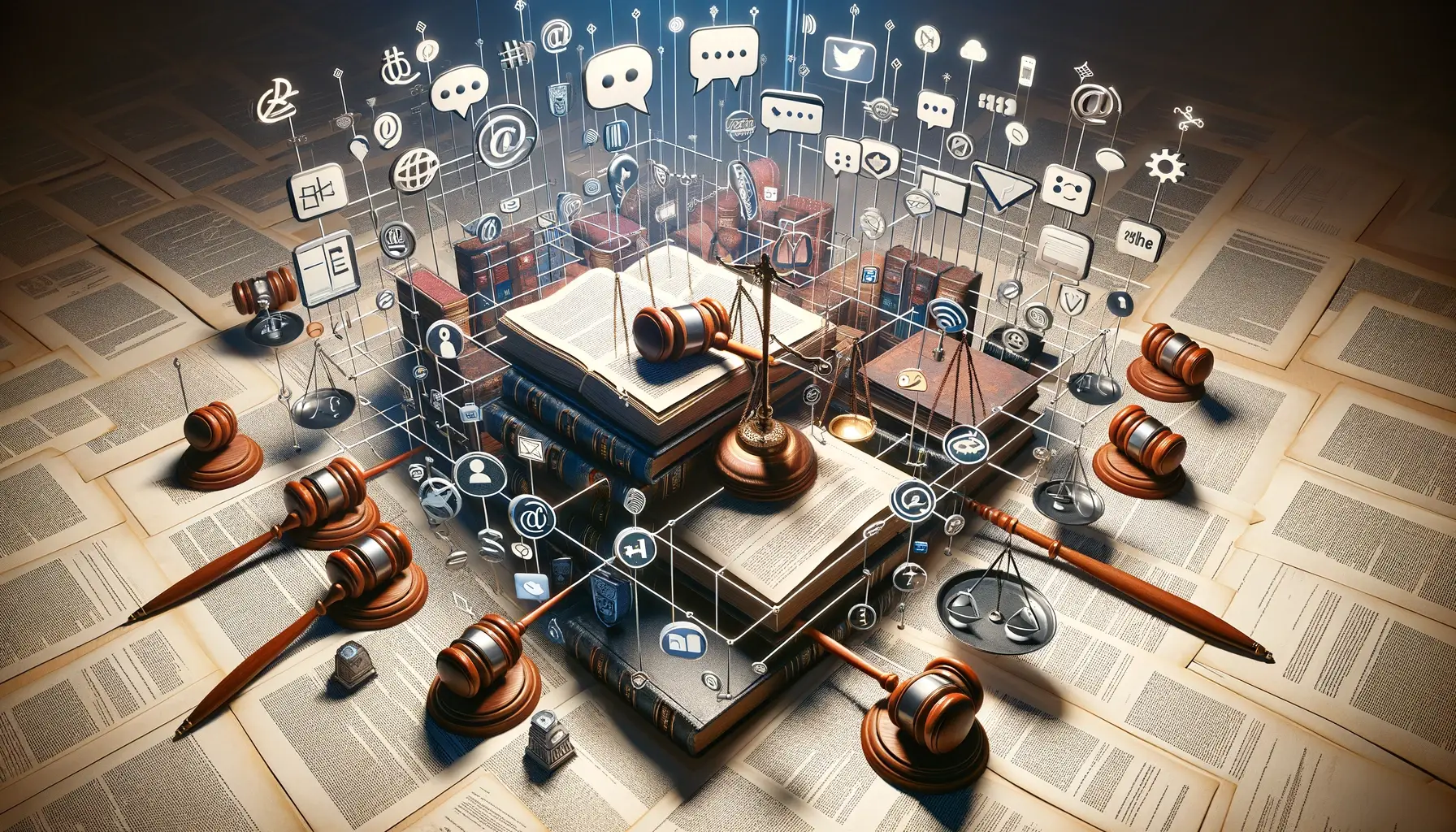
Balancing Censorship and Free Speech
A key concern in the regulatory realm is the delicate balance between preventing disinformation and protecting free speech. Policies aimed at regulating content run the risk of overreach, potentially leading to censorship or the suppression of dissenting voices. It is essential that regulations are crafted with precise language targeting bad-faith actors, incorporating input from diverse stakeholders to ensure a fair and just approach. Public discourse, a pillar of democratic societies, relies on the ability to exchange ideas freely—but with the assurance that those ideas are not intentionally crafted lies meant to corrupt and mislead. Governing bodies and platforms alike must navigate this balance with care, fostering a climate of open dialogue while making a concerted effort to dismantle the machinery of disinformation.
International Efforts to Combat Disinformation
Acknowledging that disinformation is a borderless problem, international collaboration becomes imperative in combating falsehoods and upholding information integrity. By sharing best practices, resources, and intelligence, countries can unite in a global front against the digital threats posed by state-sponsored propaganda and transnational disinformation campaigns. Cross-border initiatives can foster the exchange of digital forensics techniques, support joint fact-checking endeavors, and promote universal norms for responding to the spread of falsehoods online. In a world where information travels as freely as it does today, a cohesive and cooperative international strategy stands as one of our greatest assets in the enduring fight against disinformation.
Moving Forward: The Path Ahead in the Fight Against Disinformation
Innovations in Technology to Detect False Information
Advancements in technology are key allies in the ongoing battle to detect and counter false information. New tools and platforms are under development, harnessing the power of artificial intelligence and machine learning to quickly identify and flag disinformation. Innovations in digital forensics are yielding more sophisticated means of tracing the origin and authenticity of content, including the verification of images and videos. These technological solutions, when integrated with human expertise, can provide an agile and robust response to the manipulation of information. Staying at the forefront of such innovations ensures a proactive posture in the digital information landscape, equipping society with the means to preserve the integrity of our shared narratives.

Collaborative Efforts Between Different Sectors
Collaboration across different sectors of society stands as a crucial strategy in the fight against disinformation. Technology companies, government agencies, academia, and civil organizations can unite in their efforts, pooling resources and insights to create a more formidable defense. This cross-sector approach encourages the sharing of information and strategies, promoting a holistic response to a multi-faceted problem. Collective action not only distributes the burden of combating disinformation but also fosters interoperability of methods and standards, resulting in a more resilient and unified front against the purveyors of deceit.
Empowering Communities to Foster Informational Integrity
The frontline in the war against disinformation often exists at the local community level, where the effects of misinformation are most acutely felt. Empowering communities through education and resources is essential for fostering informational integrity. This effort involves equipping individuals with the ability to critically evaluate information, promoting transparency in local institutions, and establishing grassroots initiatives that encourage dialogue and truth-seeking. By bolstering community resilience to disinformation, society at large becomes more immune to the divisive effects of false narratives. Active participation and ownership of the truth create an environment where honesty is valued and deception finds little ground to take root. This bottom-up approach ensures that the fight against disinformation is not just waged from the top down but is championed by every individual who values the sanctity of fact in our digital world.
Conclusion
Summary of the Exposed Challenges and Solutions
As we near the end of our exploration into the disinformation phenomenon, we confront a constellation of challenges: from the spread of digital deceit and the erosion of cognitive security, to the insidious echo chambers that distort our democratic discourse. Yet, through this journey, we have also illuminated a host of solutions—technological innovation, proactive policy, community empowerment, and rigorous fact-checking—that offer hope for resilience. These tools and strategies form the bulwark of our defense, underpinning a commitment to critical thinking and the validation of truth. It is only through the concerted efforts of all stakeholders in this informational ecosystem—governmental bodies, media entities, educational institutions, and private citizens—that we can secure the integrity of our digital information landscape.
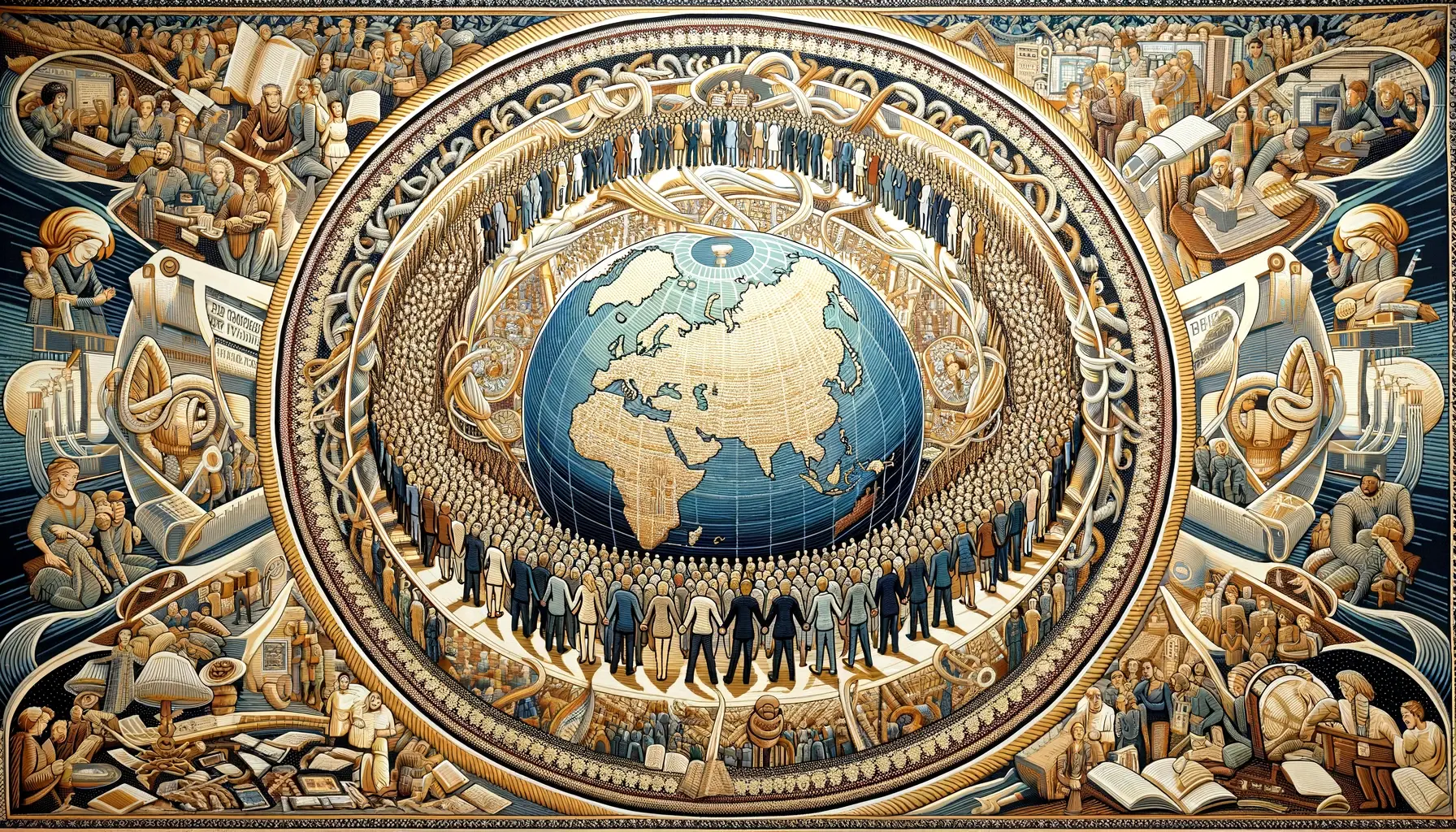
The Continuous Battle for Truth in the Digital Age
As we stand vigilant in the continuous battle for truth, we recognize that the fight against disinformation is not a final destination but an ongoing journey. In the ever-evolving digital age, our quest for factual integrity must adapt to new challenges and threats. We are reminded that each of us, as advocates for veracity, serves an integral role—questioning, verifying, and disseminating truths to ensure a well-informed public. As agents of change, we foster an environment where transparency prevails and disinformation withers in the presence of informed critical analysis. Together, embracing the complexity of this digital frontier, we reinforce the foundations of truth for generations to come, for it is in truth that freedom ultimately thrives.
Additional Resources
References and Further Reading
For those seeking to delve deeper into the fray against disinformation and arm themselves with knowledge, an array of additional resources stands ready to assist. Extensive research, conducted by academic experts and leading think tanks, offers comprehensive insights into the mechanisms and effects of misinformation. Fact-checking organizations provide databases of debunked claims and tools to aid in information verification. Books, peer-reviewed articles, and educational materials on media literacy and critical thinking can expand one's understanding of the cognitive biases at play. Websites, online courses, and workshops dedicated to digital forensics can further one’s skills in detecting false narratives. By engaging with these resources, individuals can fortify their defenses against disinformation and contribute to the collective effort of upholding the truth.

Organizations and Tools for the Public
Integral to fostering an environment of truth are organizations and tools available to the public that work tirelessly to promote information integrity. International coalitions such as the International Fact-Checking Network champion collaboration among fact-checkers worldwide, providing a united front against falsehoods. Initiatives like media literacy campaigns target various demographics to encourage critical engagement with content. Technology platforms and software developers are continually rolling out new applications and extensions designed to help users discern the credibility of information encountered online. Engaging with these entities equips individuals with practical ways to combat disinformation, ensuring that each person is not only a consumer of information but also a guardian of truth. By leveraging these resources, the public can participate actively in the defense of factual discourse, building a more resilient and informed society in the face of the disinformation that threatens it.
